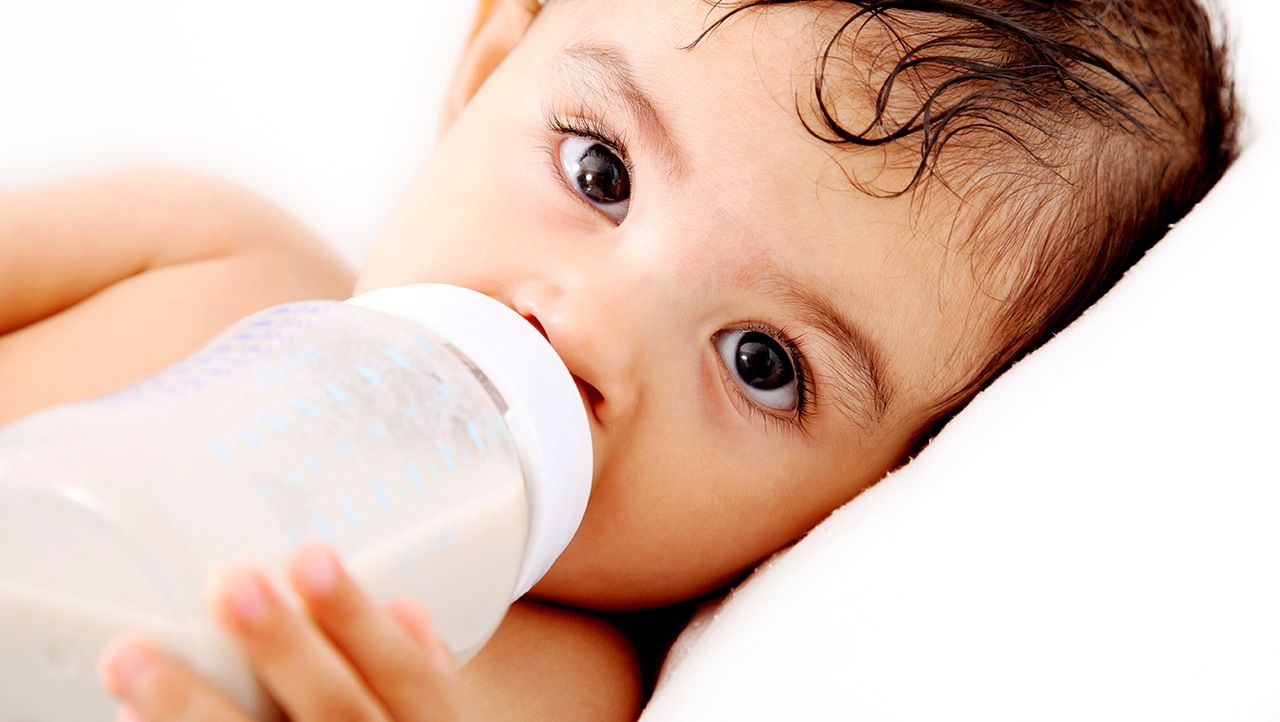
You may have wondered when your baby would be able to hold the bottle on the baby after noticing that he has begun to sit up and reach for toys.
Babies being able to grasp their bottle is a sort of accomplishment and an indication that the brain and muscles are developing.
The added benefit is that your baby no longer requires assistance to hold the bottle on the baby, allowing you to engage in other activities.
Here are some facts about babies when they can hold their bottle:
• There is no exact age when a baby can hold a bottle
Finding out when a baby can handle the bottle, like other newborn development milestones, varies from baby to baby.
Babies will probably require parental assistance to sip milk from birth until the next three months. Then, hold the bottle or guide your nipple to the baby’s mouth.
Babies, on the other hand, will gradually gain independence. As he grows, your baby can grasp his feeding bottle.
Most babies will start holding their bottle between 6-10 months of age. As their fine motor skills develop,
Fine motor skills are the ability of the muscles of the fingers, hands, and arms to control something.
However, some signs indicate a baby’s readiness to hold his bottle. For example, the baby can sit on his own for at least 10 minutes.
This achievement shows that the baby can balance himself. In addition, a baby who can reach for his toy or grab his bottle while you are preparing to feed him can also be a sign that the baby can hold his bottle.
• Avoid using bottle holders
When the baby can hold the bottle by himself, it will undoubtedly make it easier for you to do other work. For example, some parents use a bottle holder to help their baby drink, even though the baby can’t hold the bottle himself, such as using a pillow as a support bottle.
However, this is not a good idea, and it is better to wait until the baby can hold the bottle on his own. “It’sessentialt to make sure the baby reaches and grabs the bottle on his own, and you don’t use a bottle holder.
This can cause the baby to choke, and you can miss vital signs of the baby’s development during the feeding process if he can’t pull the bottle himself out of his mouth. In addition, using a crutch and leaving the bottle in your baby’s mouth can increase your baby’s risk of developing ear infections and tooth decay. Babies are also more prone to drinking than they need.
Make sure that the baby can hold the bottle by himself by looking at the right signs to avoid things that are not desirable.
• Sharpen baby’s muscles
To reach when the baby can hold the bottle on its own needs to go through several stages of development. First, you can help develop your baby’s muscles and ability to grab his bottle.
For example, giving the baby a toy or teether to the mouth when the baby sits. This method will sharpen the baby’s neck muscles so that he can hold and drink from his bottle.
Also, do tummy time regularly to strengthen the core muscles. In addition, you can also guide the baby’s hand to put the bottle in the baby’s mouth.
Click here for the recommendation of baby bottle Malaysia.




